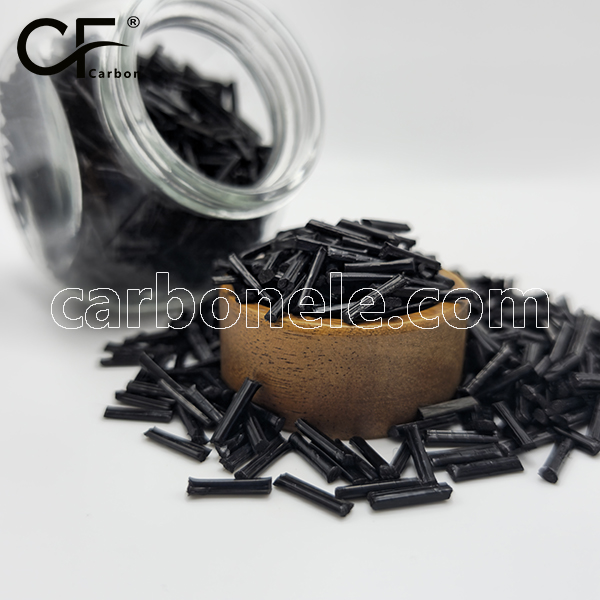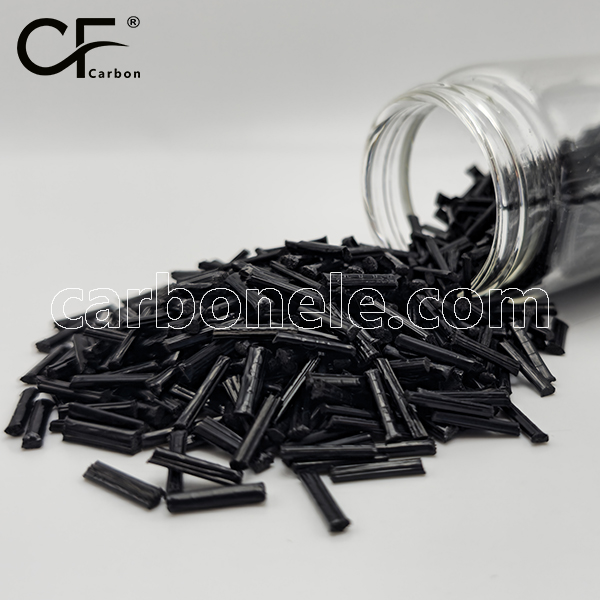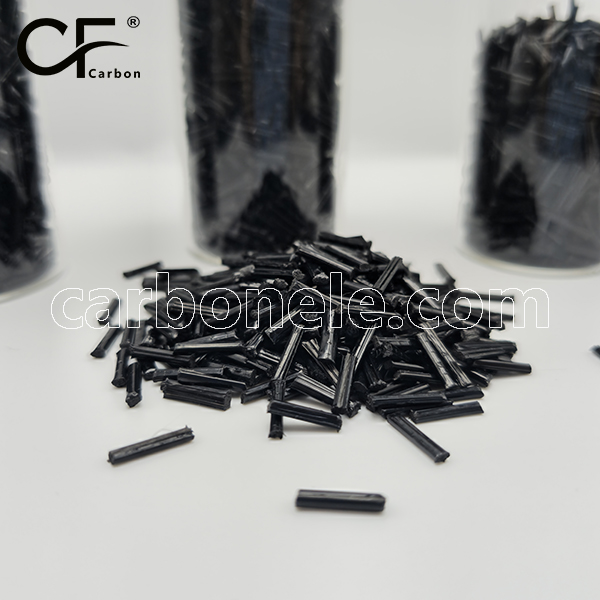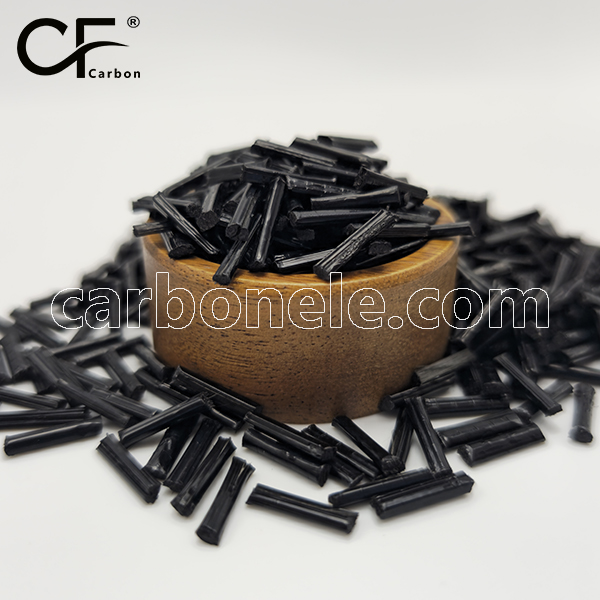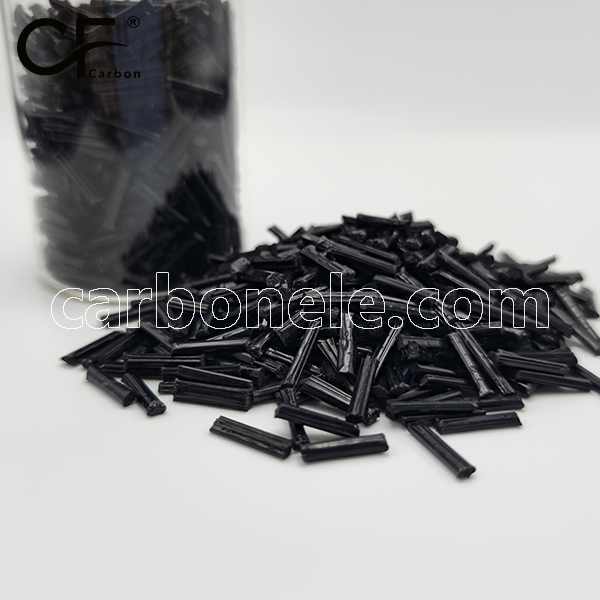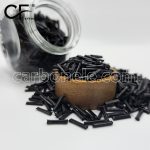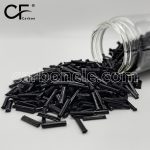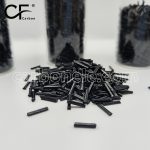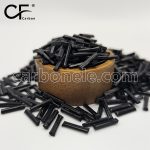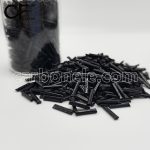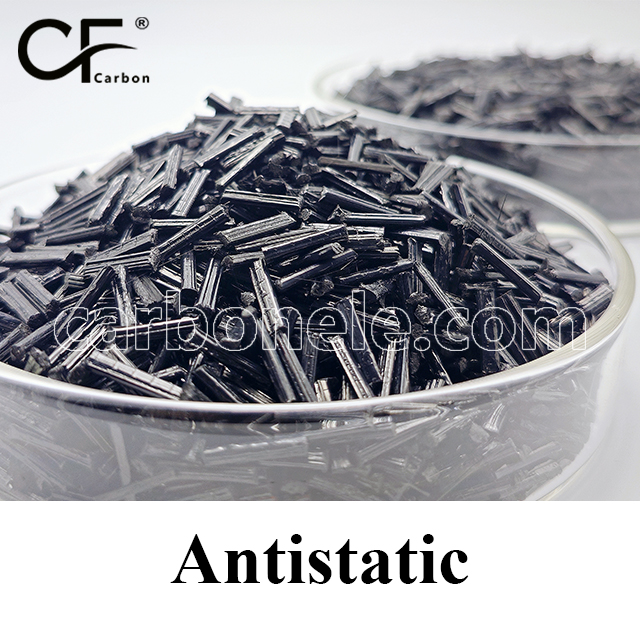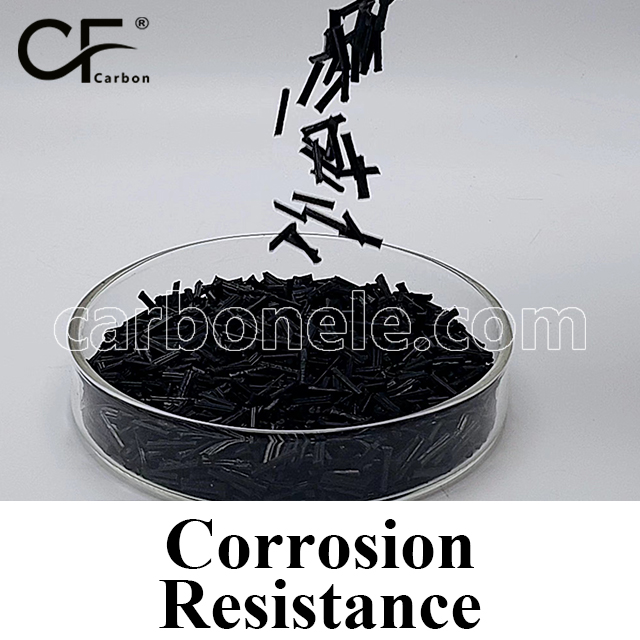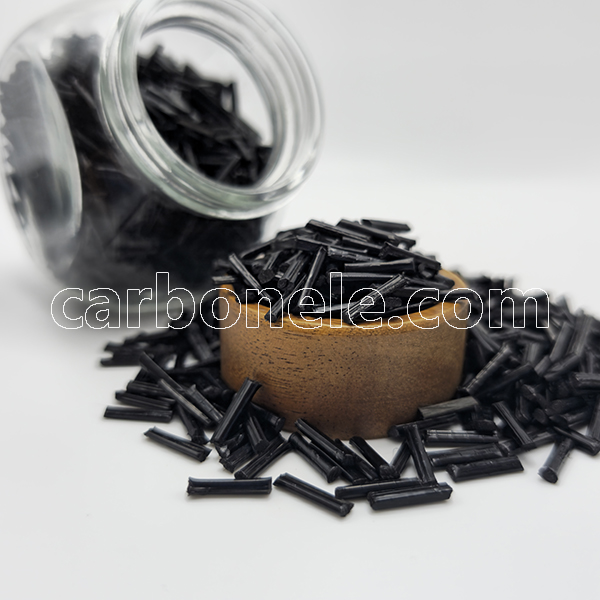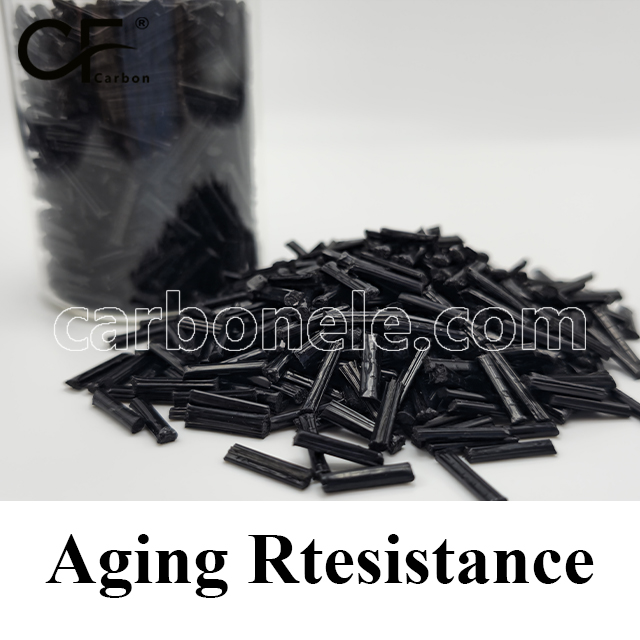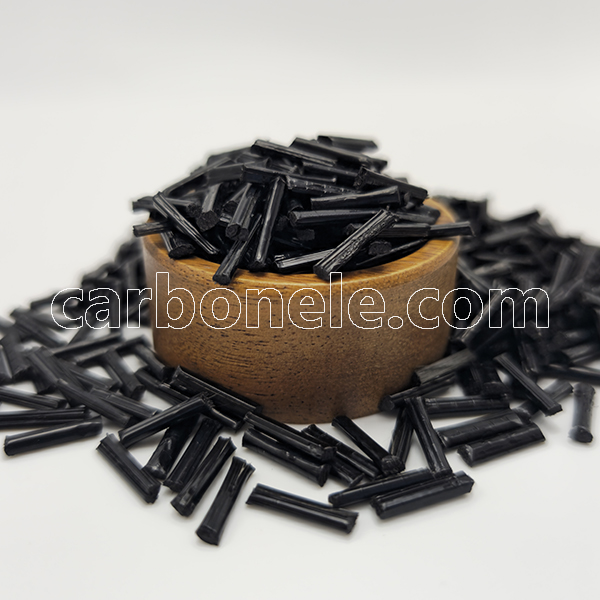The friction coefficient of PA66-CF is significantly lower than that of unreinforced PA66, thanks to the presence of carbon fiber, which acts as a solid lubricant. While PA66 already offers decent wear resistance, the addition of carbon fiber greatly enhances its tribological performance by reducing surface friction and improving wear resistance under load and repeated motion. This makes PA66-CF especially suitable for applications involving sliding contact or dynamic mechanical stress.

PA66-LCF10 Reinforced for Auto Electronics
PA66-LCF10 is a 10% long carbon fiber reinforced nylon offering superior strength, heat resistance (HDT 250°C) and dimensional stability. Perfect for automotive electronics like ECU housings, providing vibration resistance and weight reduction.
- Model number: PA66-LCF-BCA1
- Matrix Resin: Polyamide66
- Reinforcing Filler: Carbon fiber(10%)
- Appearance: Granules
- Grade: Injection/extrusion grade
- Packaging: 25kgs/bag
PA66-LCF10 Reinforced for Auto Electronics – High-Performance Engineering Plastic
Introduction to PA66-LCF10
PA66-LCF10 is a high-performance engineering thermoplastic composite made from Polyamide 66 (PA66) reinforced with 10% long carbon fiber (LCF). This advanced material combines the excellent mechanical properties of PA66 with the superior strength and stiffness provided by carbon fiber reinforcement. The result is a lightweight yet incredibly durable material that excels in demanding industrial applications, particularly in the automotive and electronics sectors.
PA66 itself is known for its high melting point, chemical resistance, and toughness, making it a popular choice for engineering applications. The addition of long carbon fibers enhances its structural integrity, offering improved tensile strength, impact resistance, and dimensional stability—key factors for components subjected to high stress and thermal cycling.
Key Properties of PA66-LCF10
-
High Strength & Stiffness
The 10% long carbon fiber reinforcement significantly increases the material’s tensile strength and rigidity, making it ideal for load-bearing automotive parts. -
Excellent Heat Resistance
PA66-LCF10 maintains its mechanical properties at elevated temperatures, with a heat deflection temperature (HDT) of approximately 250°C, ensuring reliability in high-heat environments like engine compartments. -
Low Warpage & Dimensional Stability
Unlike short-fiber composites, long carbon fibers provide better resistance to warping, ensuring tight tolerances for precision components. -
Lightweight Yet Durable
Carbon fiber reinforcement reduces weight while enhancing durability, making it a superior alternative to metals in automotive applications. -
Chemical & Wear Resistance
PA66-LCF10 resists oils, fuels, and other automotive fluids, reducing degradation over time.
Application Example: Automotive Electronics Housing
One of the most critical applications of PA66-LCF10 is in automotive electronic housings, such as ECU (Engine Control Unit) casings. These components require:
-
High mechanical strength to withstand vibrations and impacts.
-
Thermal stability to endure under-the-hood temperatures.
-
Lightweight design to improve fuel efficiency.
-
Electrical insulation to protect sensitive circuitry.
Traditional metal housings add unnecessary weight and can corrode, while standard plastics may deform under heat. PA66-LCF10 provides the perfect balance of strength, heat resistance, and weight savings, making it an optimal choice for modern automotive electronics.
Why Choose PA66-LCF10?
For engineers and manufacturers in the automotive and electronics industries, PA66-LCF10 offers:
-
Long-term durability in harsh environments.
-
Cost efficiency by reducing part weight and improving fuel economy.
-
Design flexibility for complex, high-performance components.
Whether used in sensor housings, connectors, or structural brackets, PA66-LCF10 ensures reliability and performance where it matters most.
Conclusion
PA66-LCF10 is a high-strength, heat-resistant, and lightweight engineering plastic that meets the rigorous demands of the automotive electronics industry. Its superior mechanical properties and dimensional stability make it an excellent choice for critical components like ECU housings, where failure is not an option.
By choosing PA66-LCF10, manufacturers can achieve lighter, stronger, and more durable parts, driving innovation in next-generation automotive designs.
If you want to get more information about PA66-LCF10, you can visit our Youtube.
Click here to contact us.
Strength between PA66 and PA66-CF
Compared to unreinforced PA66, PA66-CF (carbon fiber reinforced) offers significantly higher strength and stiffness. The addition of carbon fiber increases tensile and flexural strength, enhances dimensional stability, and reduces deformation under load. While standard PA66 provides good toughness and impact resistance, PA66-CF materials are better suited for structural and high-stress applications where superior mechanical performance is required.
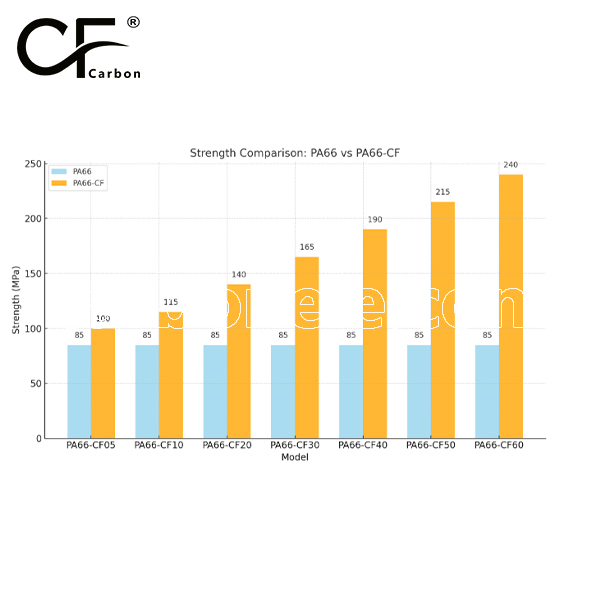
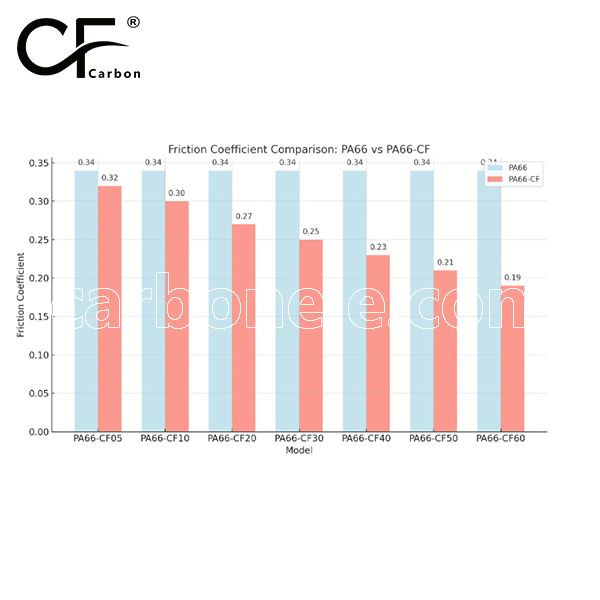

Frequently Asked Questions
Carbon (Xiamen) New Material Co., Ltd. aims to provide buyers with "one-stop" worry-free high-quality services. Here you can find all information about carbon fiber engineering plastics. If you still have questions, please send us an email for consultation!
-
How can I contact the manufacturer of a product that interests me?
When you find a product you are interested in, you can contact the manufacturer directly by sending an email and we will get back to you as soon as possible.
-
How do I find the products that interest me?
All you need to do is enter the keyword, product name in the search window and press the Enter key on your keyboard. Your search results page will then be displayed. You can also search within the product category pages on the home page. Each category is divided into subcategories, allowing you to refine your search and find products that interest you.
-
Where will I find a buying guide?
Please contact our after-sales service directly and we will provide you with a comprehensive operating guide.
-
What are CF Reinforced Thermoplastic Composites?
CF Reinforced Thermoplastic Composites are materials where carbon fibers are incorporated into a thermoplastic matrix. They combine the strength and stiffness of carbon fibers with the processability and recyclability of thermoplastics. For instance, they are used in automotive parts like bumper beams.
-
What are the benefits of CF Reinforced Thermoplastic Composites over traditional composites?
The key benefits include faster production cycles, easier recyclability, and better impact resistance. They also offer design flexibility. An example is in the manufacturing of consumer electronics casings where complex shapes can be achieved more easily.
-
How are CF Reinforced Thermoplastic Composites processed?
Common processing methods include injection molding, extrusion, and compression molding. Injection molding is widely used for mass production. For example, in the production of small components for the medical industry.
-
What industries use CF Reinforced Thermoplastic Composites?
They are utilized in aerospace, automotive, medical, and sports equipment industries. In aerospace, they can be found in interior components. In the medical field, they might be used in prosthetics.
-
How does the carbon fiber content affect the properties of the composites?
Higher carbon fiber content generally leads to increased strength and stiffness but may reduce ductility. A moderate content is often balanced for specific applications. For example, a higher content might be preferred in structural parts of a race car.
-
What are the challenges in using CF Reinforced Thermoplastic Composites?
Challenges include higher material costs, complex processing equipment requirements, and ensuring uniform fiber dispersion. Issues with adhesion between the fibers and the matrix can also arise. An example is in achieving consistent quality in large-scale production.







